I attended art school during the twilight decade of commercial film photography. Digital cameras were common, but available pro digital cameras like the Nikon D1 could not compete with 35mm film for quality and were used mainly for press images or documentation. Photo classes focused on the traditional darkroom. I might have not been the best photographer in school, but I was skilled in the darkroom… especially at printing photos via the enlarger. One teacher remarked that I could find a career at a high-end photo lab (not sure how that would have worked out).
Every few years I ask myself if I want to abandon film. Meanwhile, my film cameras and film stock continue to increase in value while my digital cameras quickly depreciate. After the digital revolution, I paid pennies on the dollar for some of the best film tools ever created (including a massive, top of the line 4×5 enlarger). As these tools break and become rarer each year (or become hip with the younger crowd), the prices have risen. Thankfully with film I don’t get the burning desire to upgrade every few years. I’ve horded enough film and chemicals to keep shooting for a long while. In today’s prices, I might spend $300 to shoot and develop each year’s worth of 500 or so photos (you shoot a lot less junk with film). This is still affordable compared to keeping up with digital trends.
I’d like to highlight my two favorite camera systems, the Hasselblad V series and the Mamiya 645 Pro series. We call these systems, since almost any part can be quickly interchanged. You might swap the lens, the film back, the way you advance each shot, or the focusing hood. These are both Medium Format systems. They shoot a larger negative than common 35mm cameras, but are still compact and easy to lug around compared to my giant large format equipment.
The Hasselblad was considered the best Medium Format camera system during my art school years, but it has some quite dated features. To be fair, this V-series camera line originated in 1957. One big problem, the reflex mirror stays up (blocking your eye) after an exposure. You don’t know if your subject blinked or moved. In comparison, I love my budget Rolleiflex model Twin Lens Reflex because nothing obscures the subject at time of exposure. I immediately know when to take another shot. These are completely manual cameras that require a separate light meter to calculate exposure. After years of practice, I am fine with that. The Hasselblad shutter is built into the lens (which had some advantages), but there is no way for the camera or viewfinder to “speak” to it. However, the system’s optics and quality are suburb and everything is fairly rugged. To illustrate this, the exact wide-angle lens model shown captured iconic moon landing images after passing rigorous NASA testing. This system normally shoots a 6×6 square format (desirable in the time of Instagram). A square image means you need not rotate the camera between portrait and landscape mode. One less thing to think about.
In contrast, the Mamiya 645 line is a more modern camera system. Like modern things, it is made of plastic. Parts have fallen off over the years. This Pro model has a special (interchangeable) prism that automatically measures exposure AND sets the camera to the correct shutter speed. I also have a non-metered but light-weight waist level finder, but try capturing a kid with a reversed finder image and a manual lens. This system was cutting edge (at least in medium format) at the time. The photographer could simply set the aperture, focus the lens, and fire. All kinds of accessories like folding hoods and motor drives are available. These cameras use a smaller 6×4.5 format, but this is still 2.6x larger compared to 35mm film. Remember, a larger exposure means more details are captured.
For processing, I use a Jobo processor that automates agitation and temperature control or I process my film by hand in stainless steel tanks (for less temperature-sensitive processes like Silver Halide). Sometimes I go really old school and develop large format films in complete darkness.
I tend to process large batches of rolls at least three times a year. Once for my color c41 films, once for E6 transparencies/slides, and once for B&W film. The delayed gratification of seeing the results makes it all worth while.


35mm size compared to 6×6 negatives
Here are some photos from my latest January 2021 batch of color negatives. For the most part, these are from our socially distanced adventures during the pandemic.
I’ve enjoyed building my own specialized equipment. Here are ancient student projects I created to capture 3d images. These images were interlaced (with a software program called SuperFlip) and mounted to lenticular sheets to produce autostereographic images that move as the viewer changes positions.

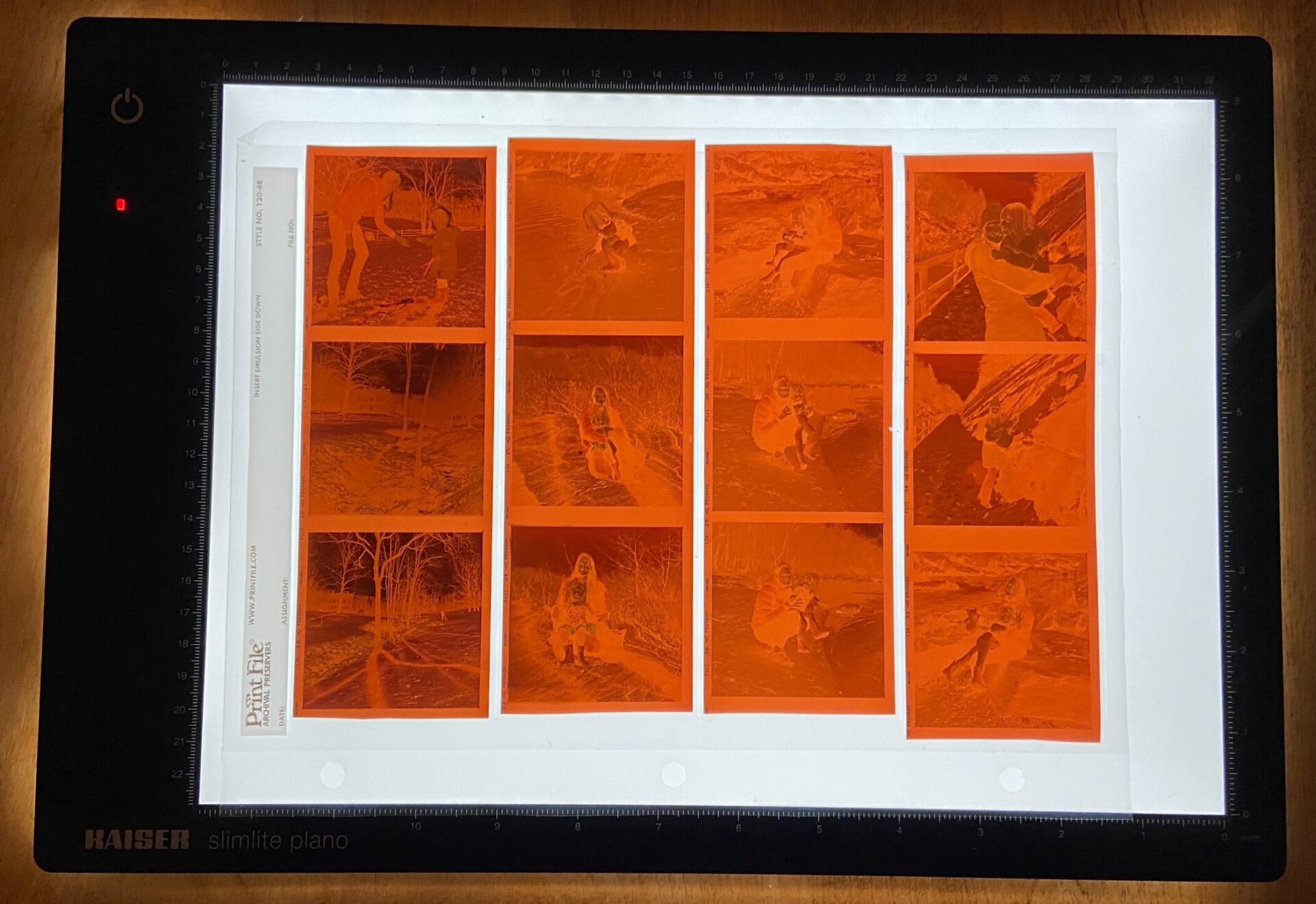
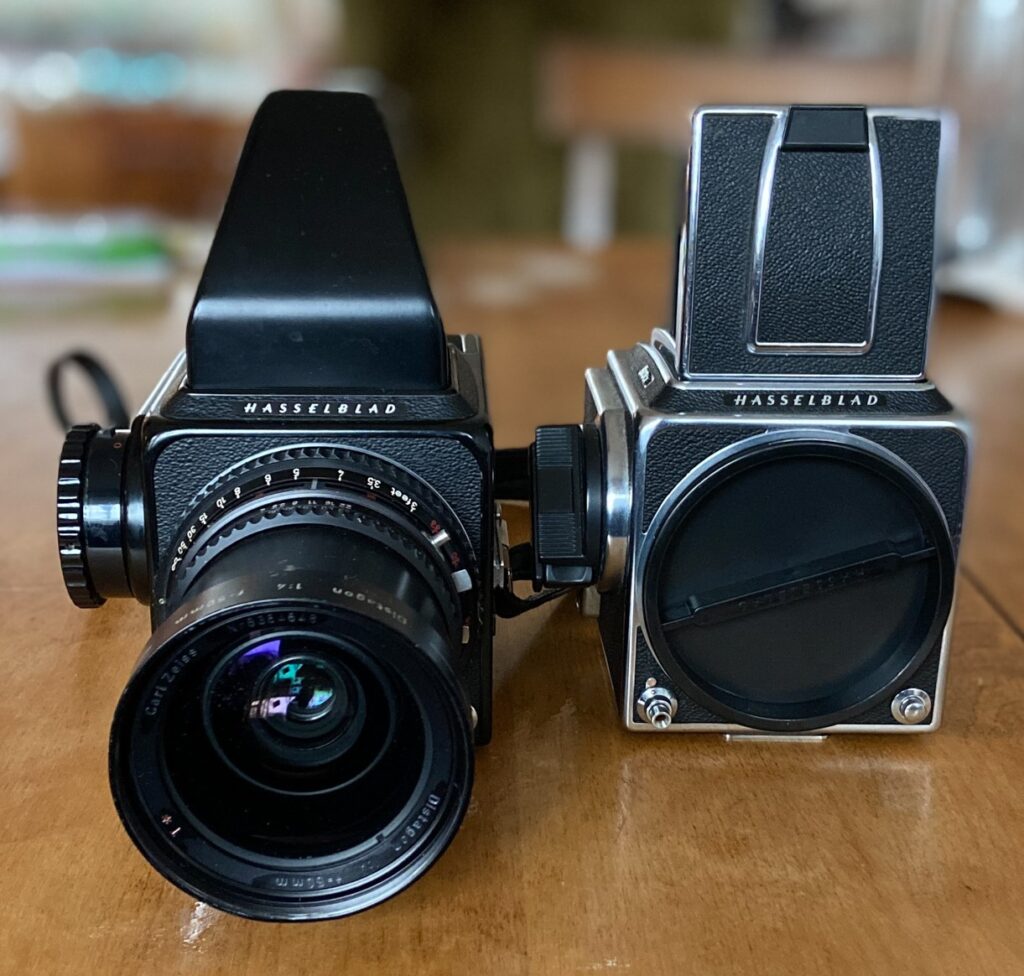
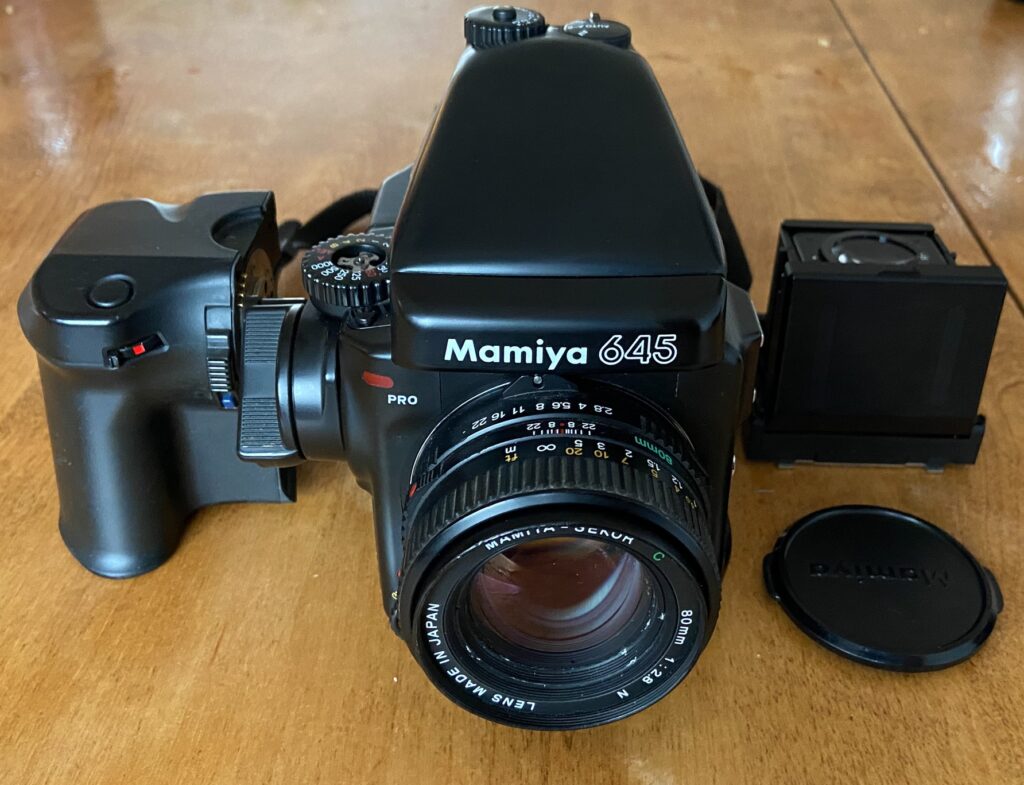
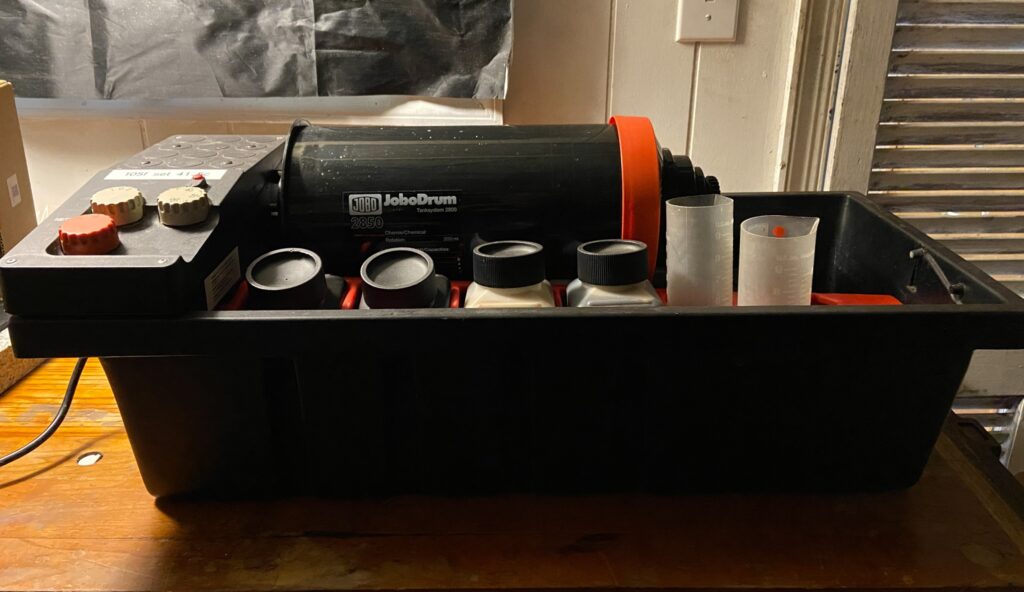
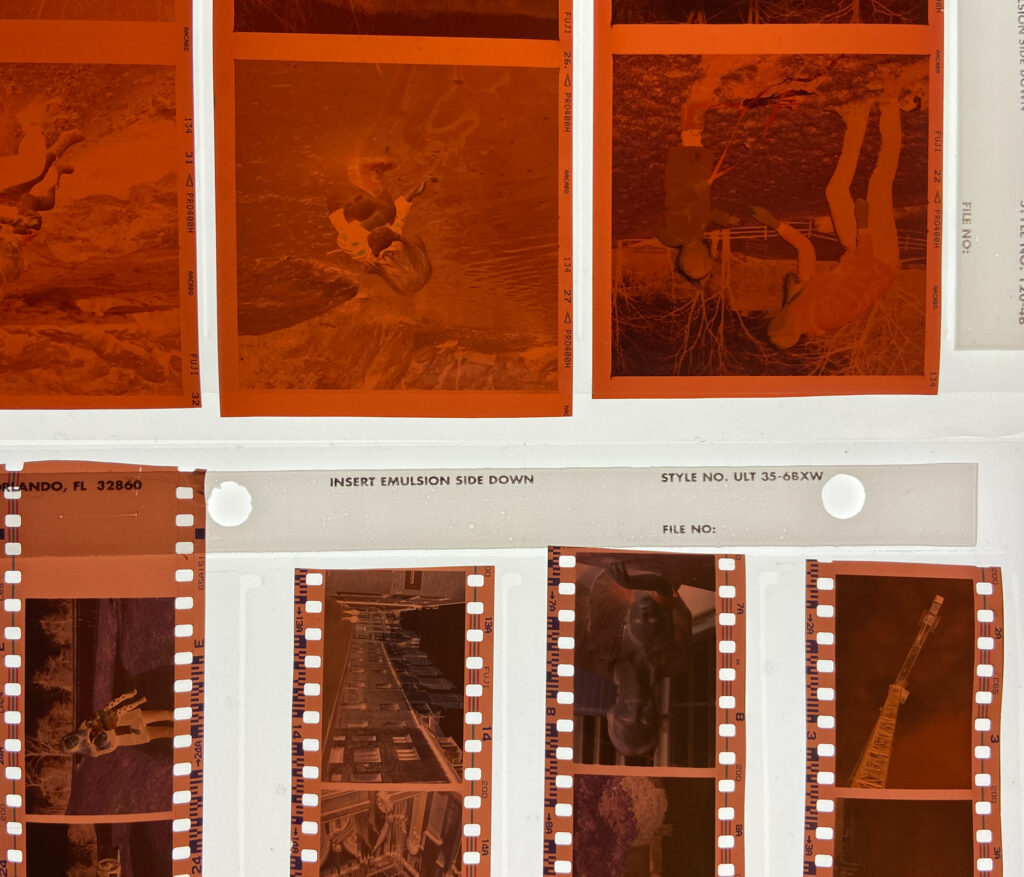

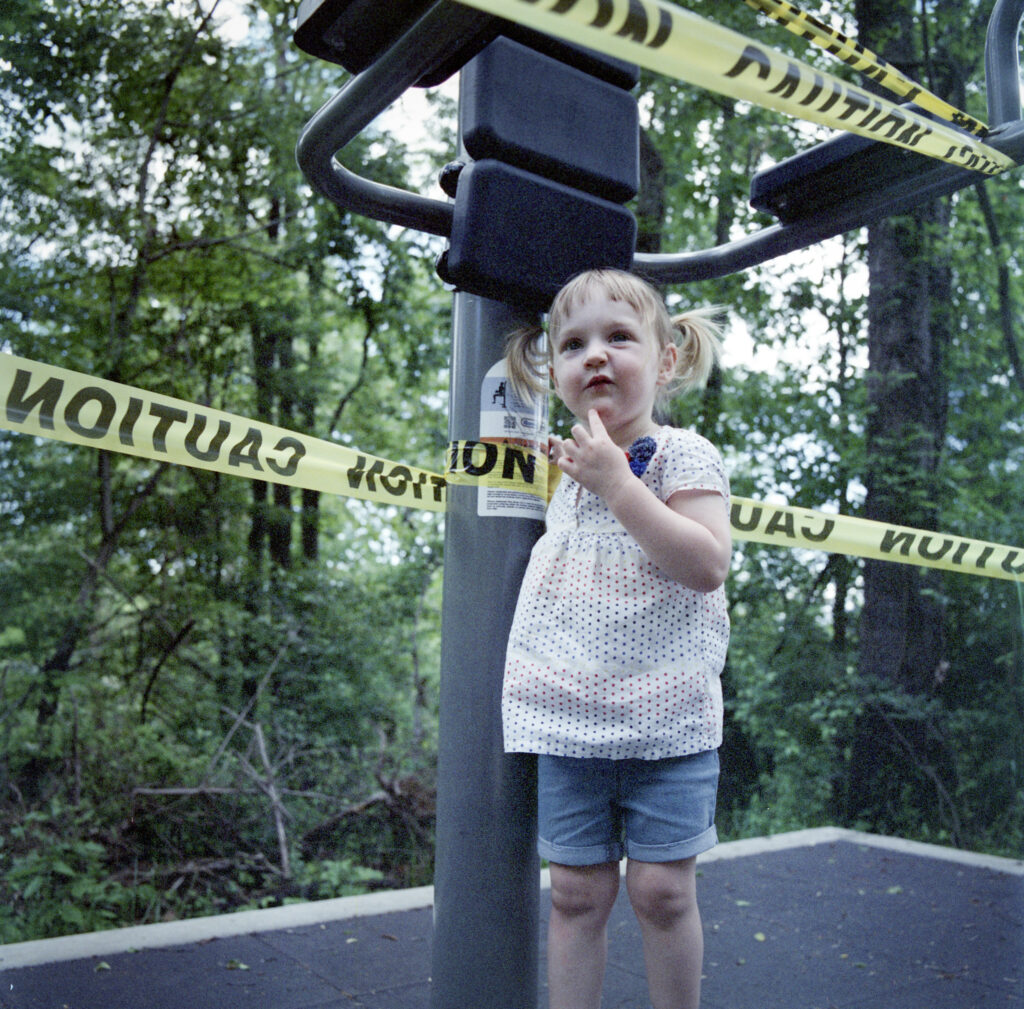

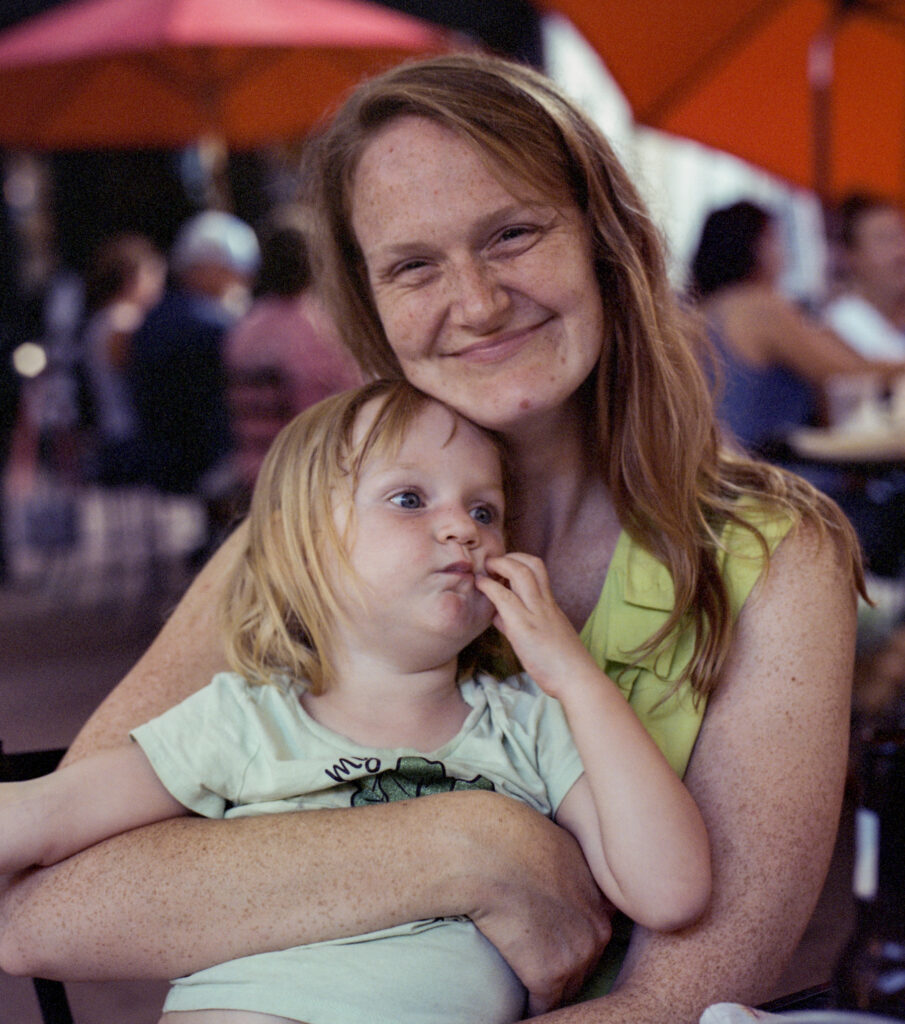


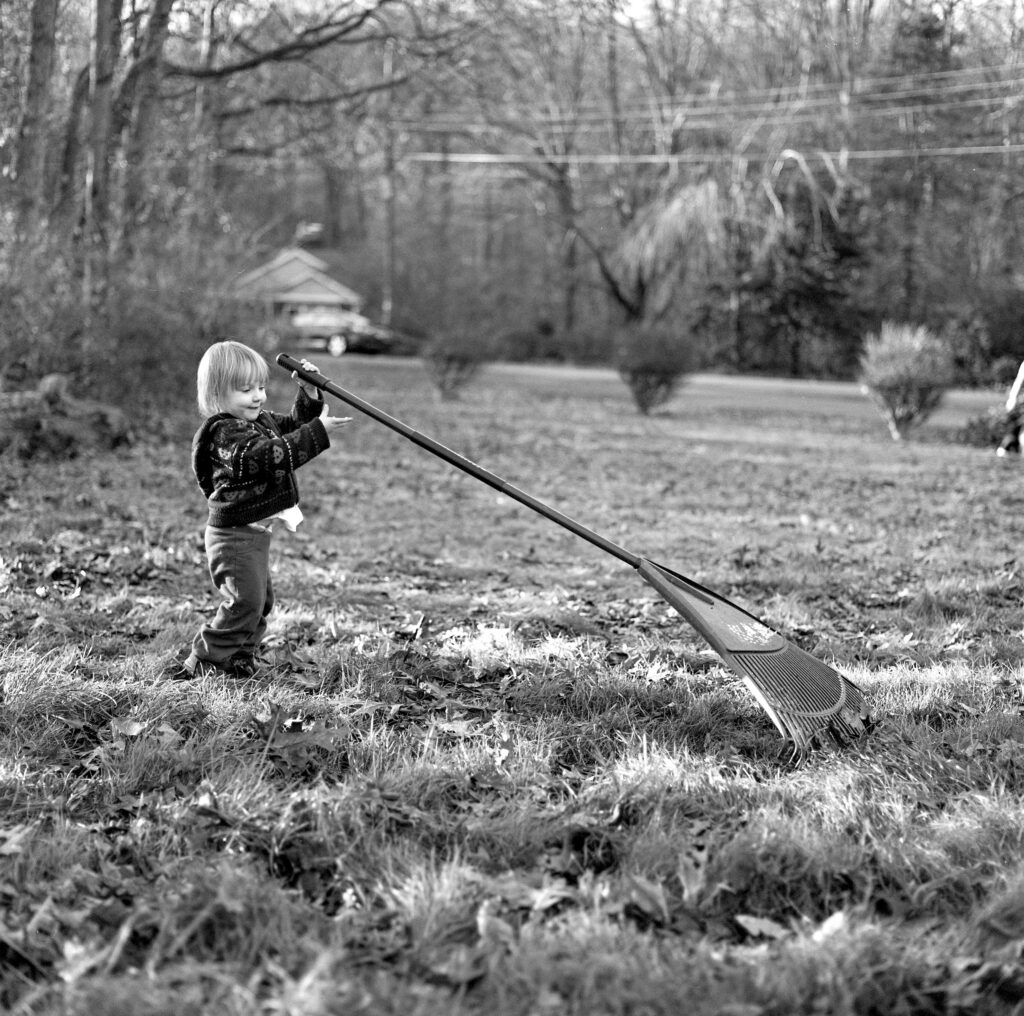
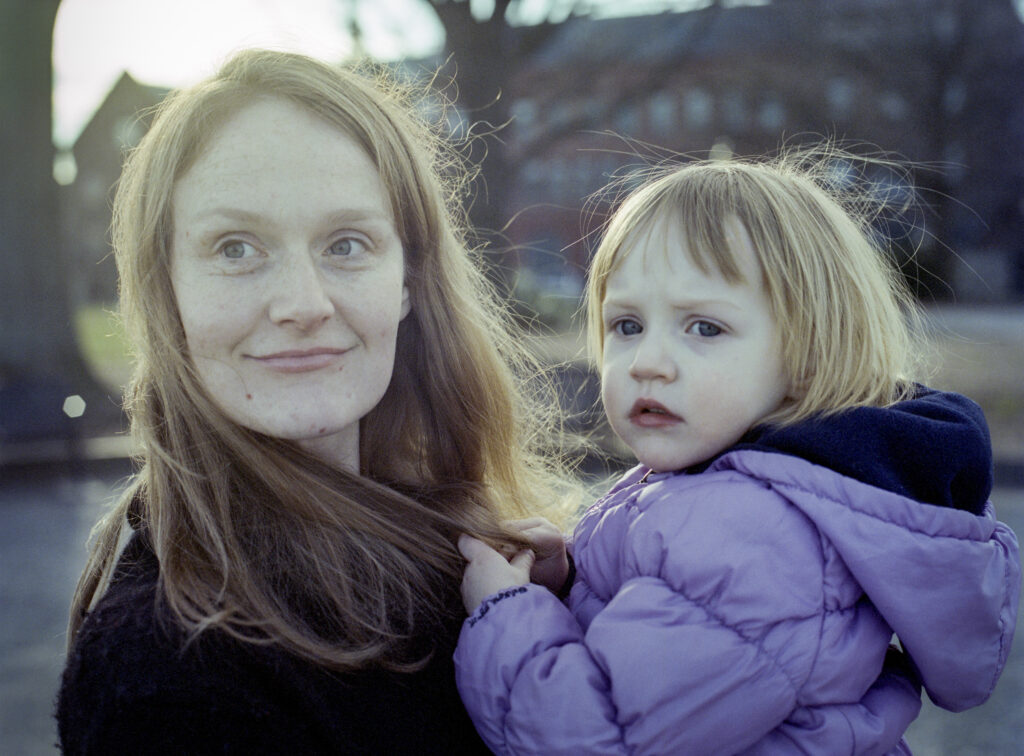
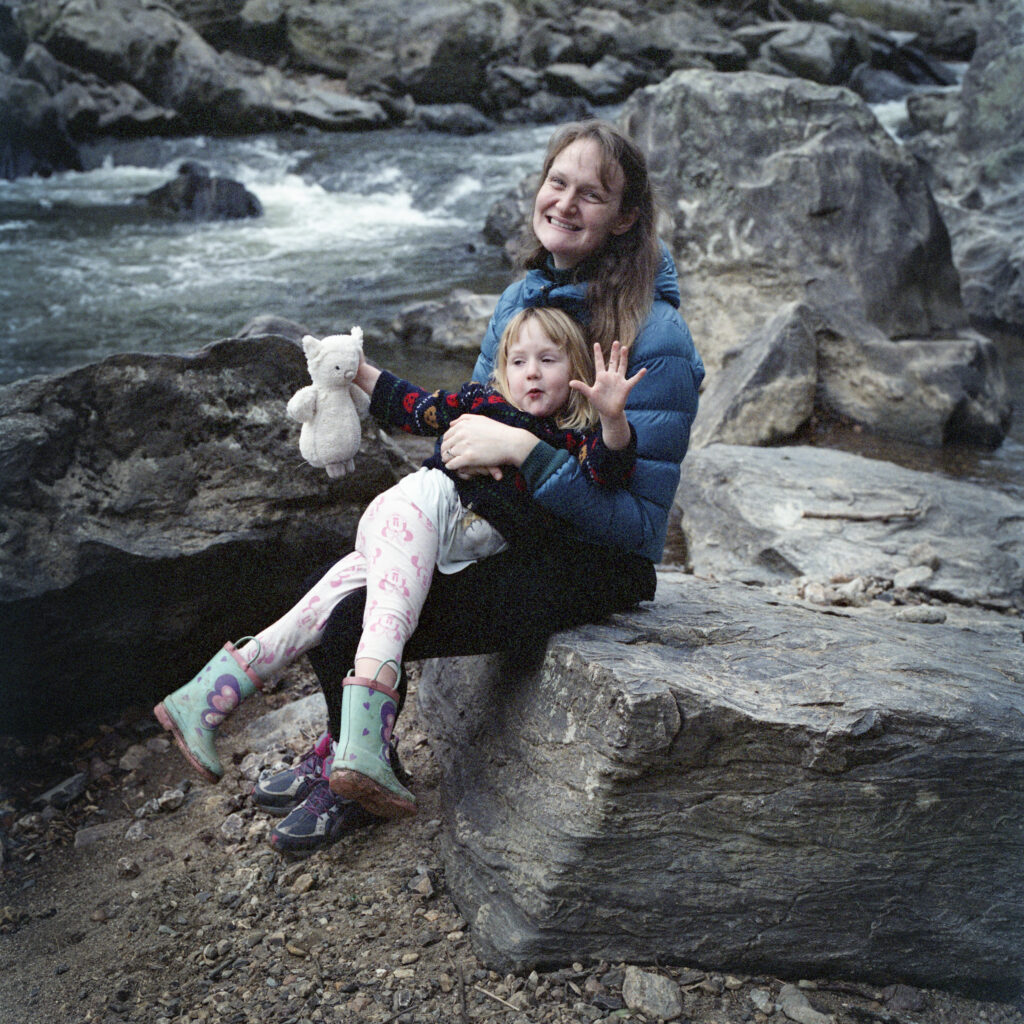
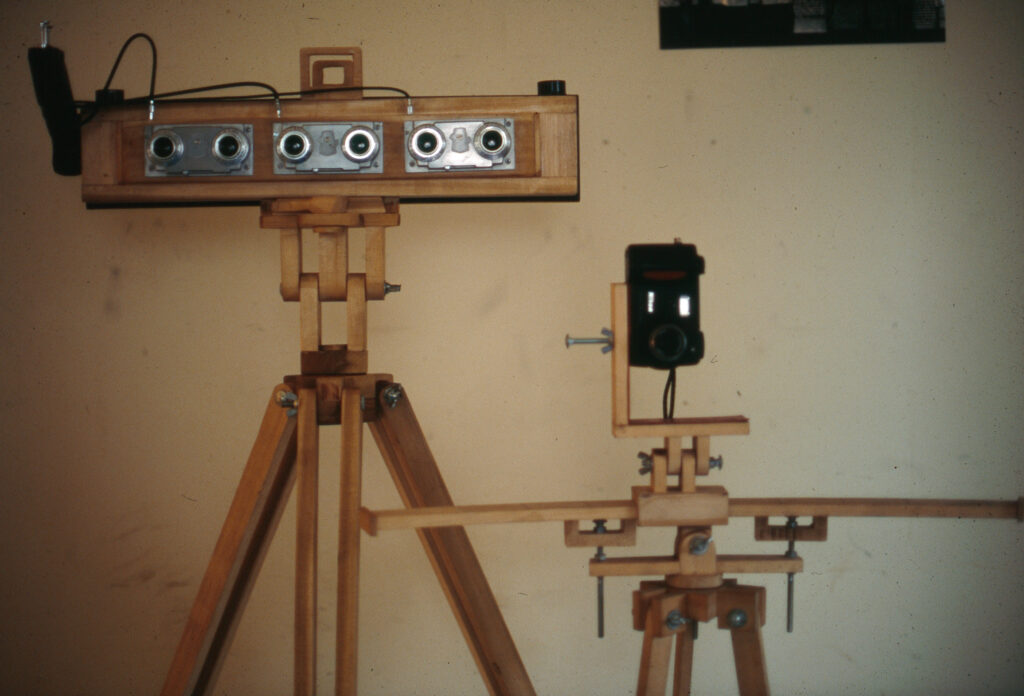



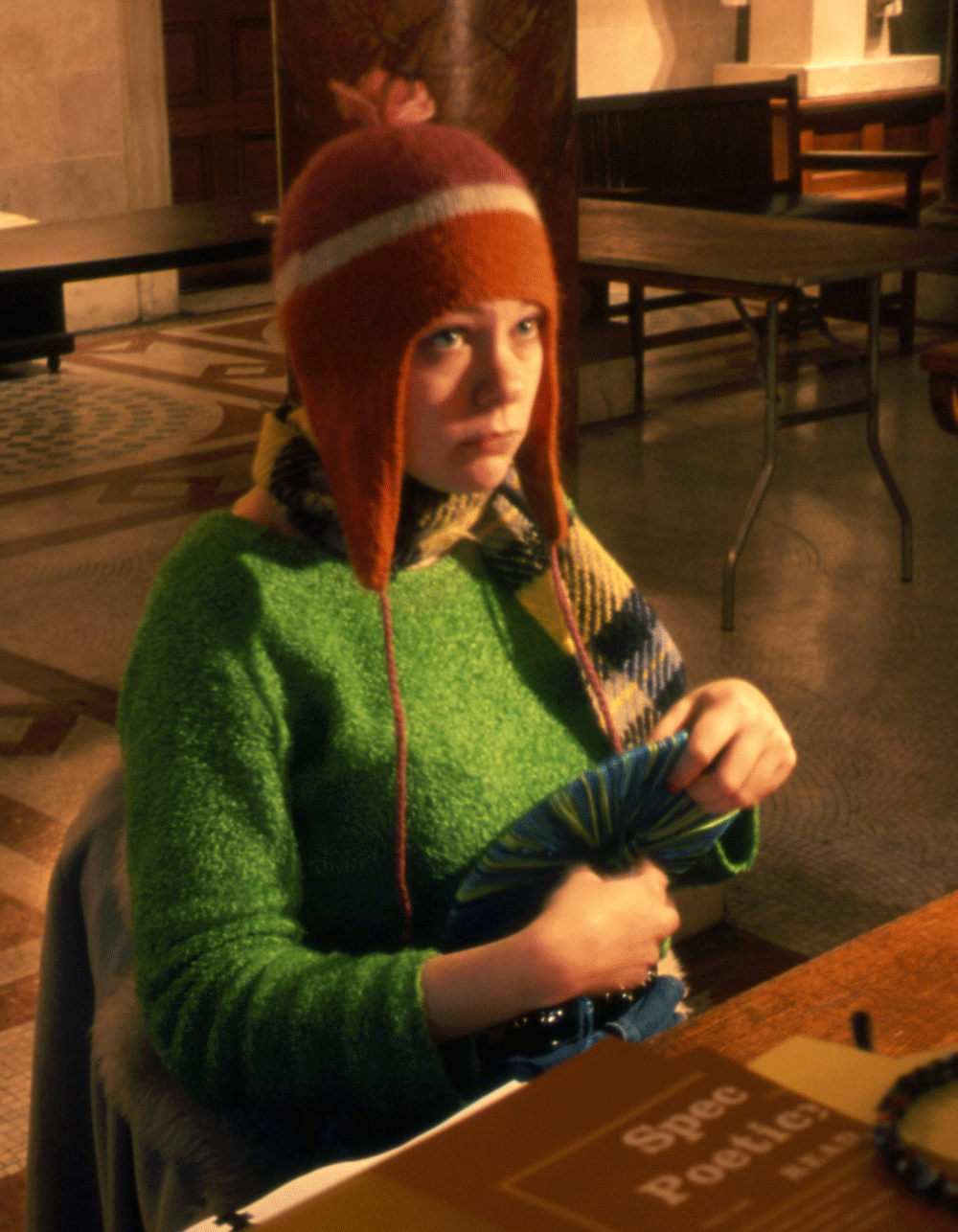
Brilliant Collin, and I’m glad you are still sewing, you were meant for this. You and your family are going to get a lot out of this, well done,